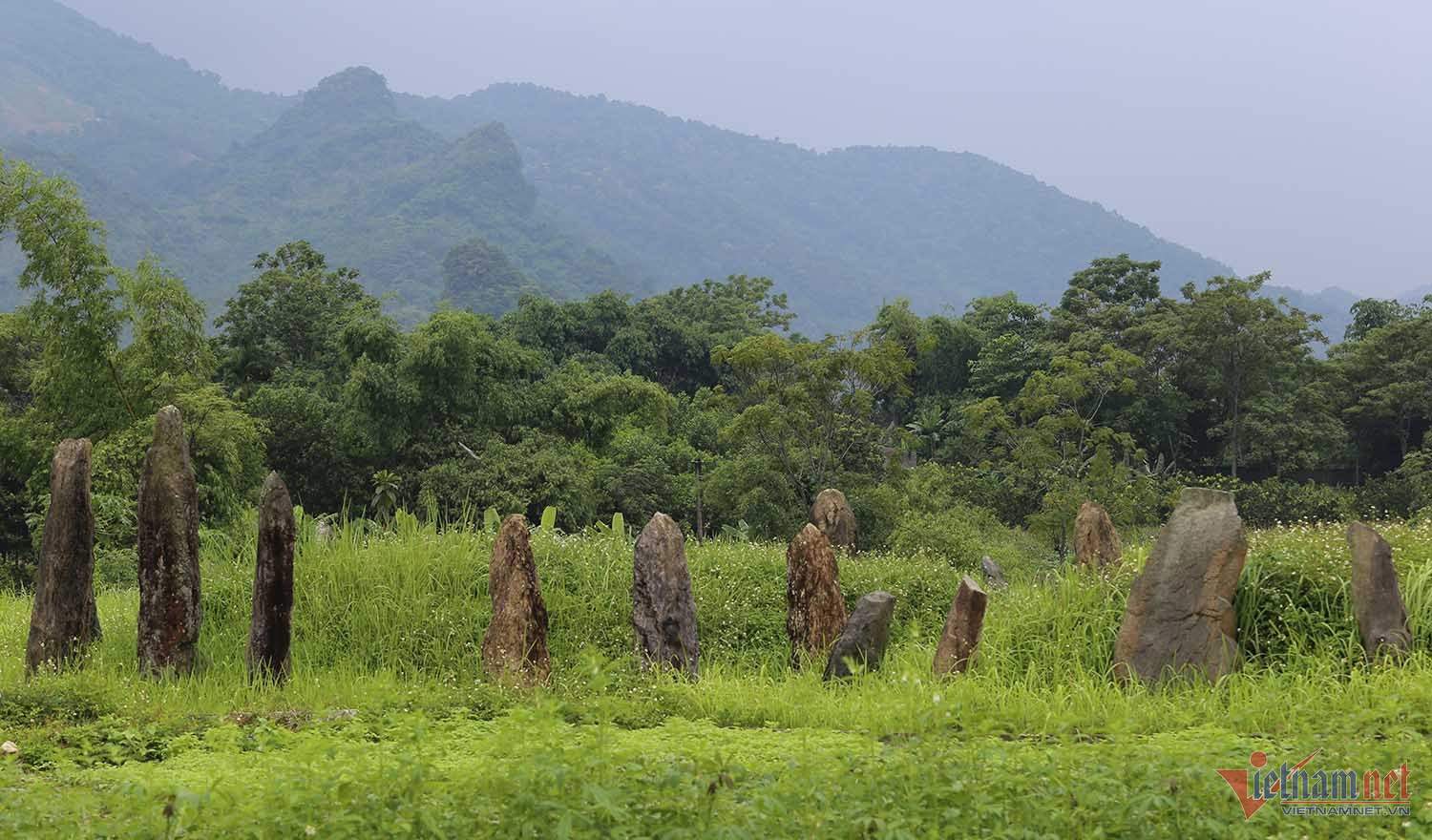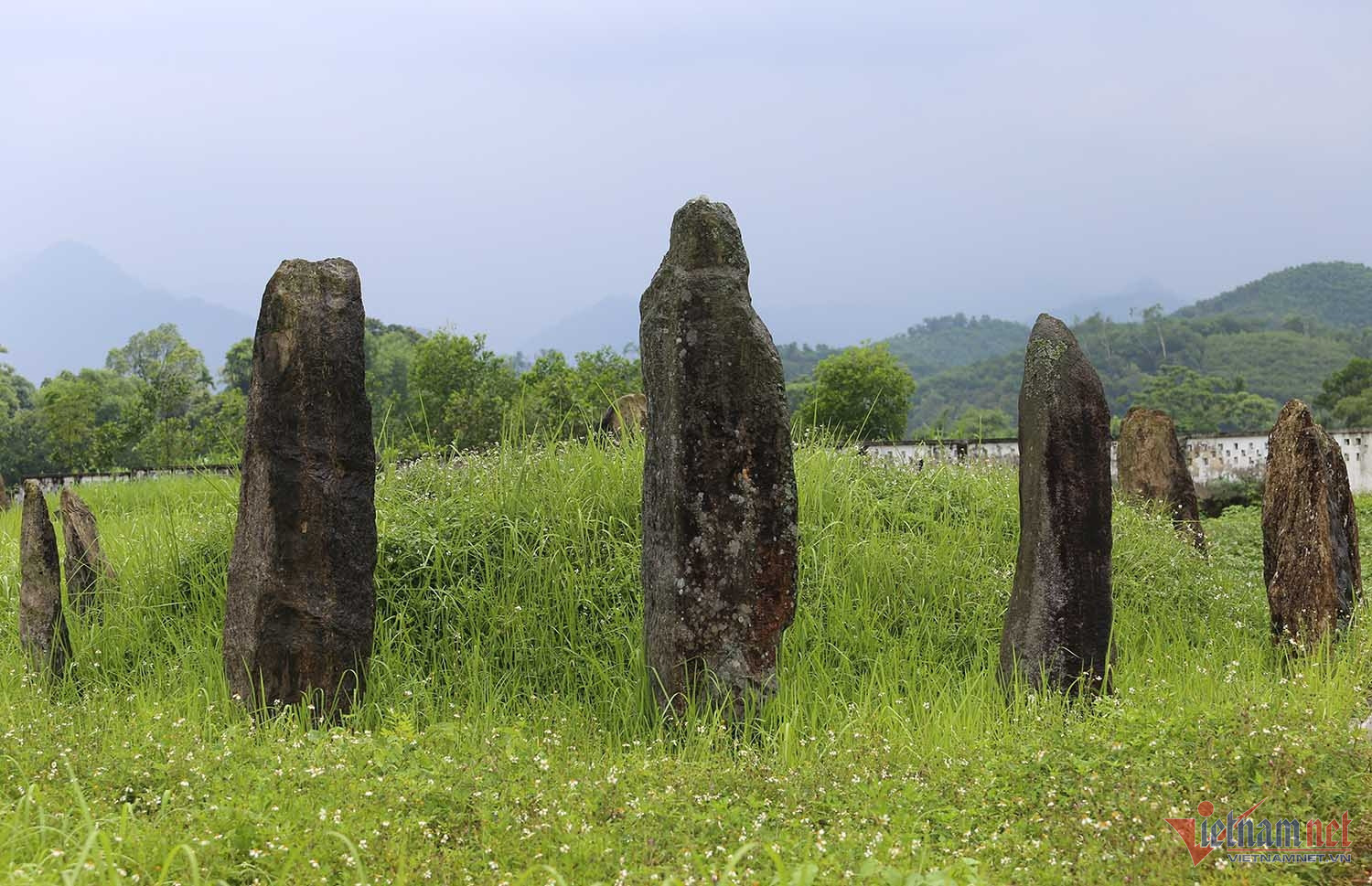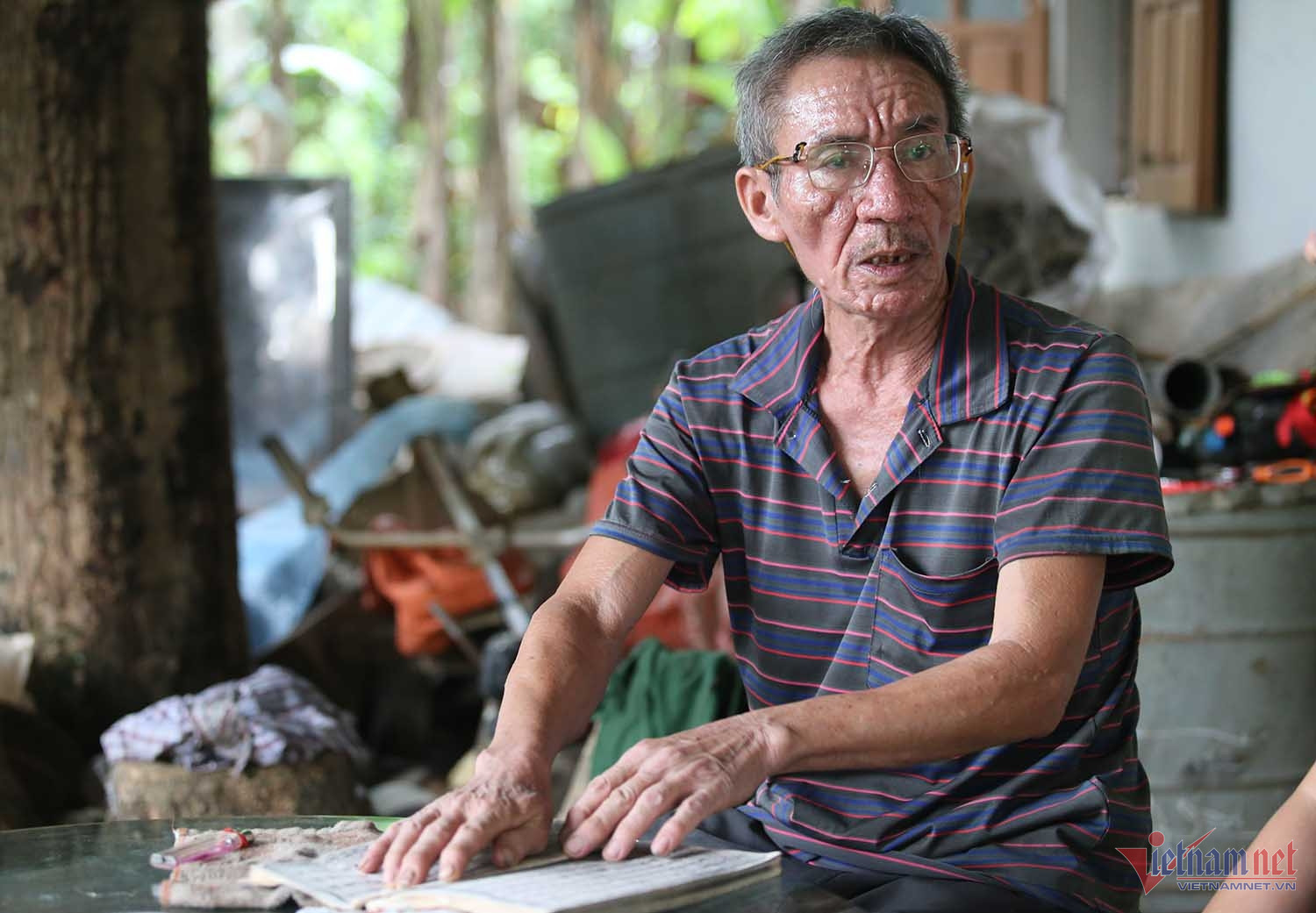
Recognized as a national historical site, the Muong Dong Thech tombs are located at the head of a valley in Chieng Hamlet, Vinh Dong Commune, Kim Boi District, Hoa Binh Province, and date back to the 17th century.
The tomb complex resembles a stone forest, with the largest pillars measuring over 1 meter in width and about 4 meters in height. The inscriptions on the stones have faded over time, adding to the enigmatic aura of these ancient graves.
Before 1975, the Dong Thech ancient tombs remained intact, surrounded by thousands of large and small stone pillars densely planted around the graves, creating a "stone forest." The large stones on many of the tombs were inscribed in Han characters, detailing the birth and death dates, titles of the deceased, and the years the tombs were erected.
In 1984, the Vietnam Institute of Archaeology excavated the ancient tombs, uncovering 207 ceramic artifacts, including bowls, plates, and vases, and 260 copper items such as coins, bowls, and nails. Additionally, 25 silver artifacts, including chains, bracelets, and tubes, were found. In 1996, the Dong Thech ancient tombs were recognized as a national archaeological site.

The ancient tombs tell the long story of the Dinh clan, a family of high-ranking officials with many talents who served the country. To delve deeper into the mysteries surrounding the Dong Thech tombs, we visited Mr. Dinh Cong Dung, a 21st-generation descendant of the Dinh clan.
Mr. Dung carefully turned the pages of the family genealogy book and explained that the tombs belong to the Dinh Cong lineage, a prominent family at the time. The Dinh clan in Muong Dong was established by Dinh Nhu Lenh, who is still worshipped as the village deity.
According to genealogy and legend, Dinh Nhu Lenh had two sons: the eldest, Dinh Quy Khiem, and the younger, Dinh Van Huong. Dinh Quy Khiem succeeded as a local ruler and was conferred the title of "Phu Quoc Tuong Quan Khiem Nghia Hau" for his services to the Le Dynasty, overseeing the Son Tay region.
Through generations, notable figures like Dinh Cong Ky emerged, who contributed to resisting invaders and building the Le Trung Hung dynasty. For his services, Dinh Cong Ky was honored posthumously with a marquis title, and his coffin was made from black canarium wood. Notably, the Le Dynasty transported many green stone pillars from Thanh Hoa to construct his tomb.
Mr. Dung added that the Dong Thech tombs once had hundreds of graves of the Dinh clan in Muong Dong, surrounded by stone tablets inscribed with Han characters. Over the years, the lack of guardianship led to vandalism and theft, altering the original state of the site. These ancient tombs reflect the historical rise and fall of the Dinh clan.


According to the Vinh Dong Commune authorities, the Dong Thech ancient tombs are an archaeological treasure, offering valuable insights into the ancient Muong society and burial customs, particularly of the Dinh Cong clan in Muong Dong.
The Vietnam History Museum notes that the Dong Thech tombs are of significant scientific, cultural, and historical value. They provide crucial evidence of the cultural and historical development of the Muong people. Dong Thech is the name of the Muong Dong tombs from the Le Dynasty era, where members of the powerful Dinh clan, who ruled Muong Dong, were buried.
Nhi Tien